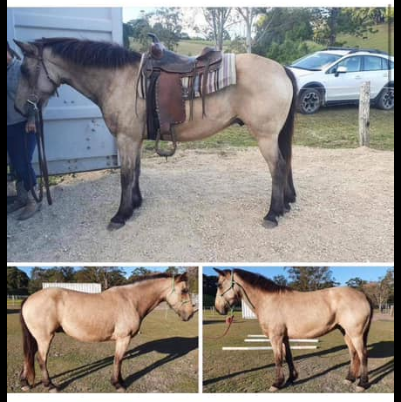Fraser Island/ K’Gari Horses
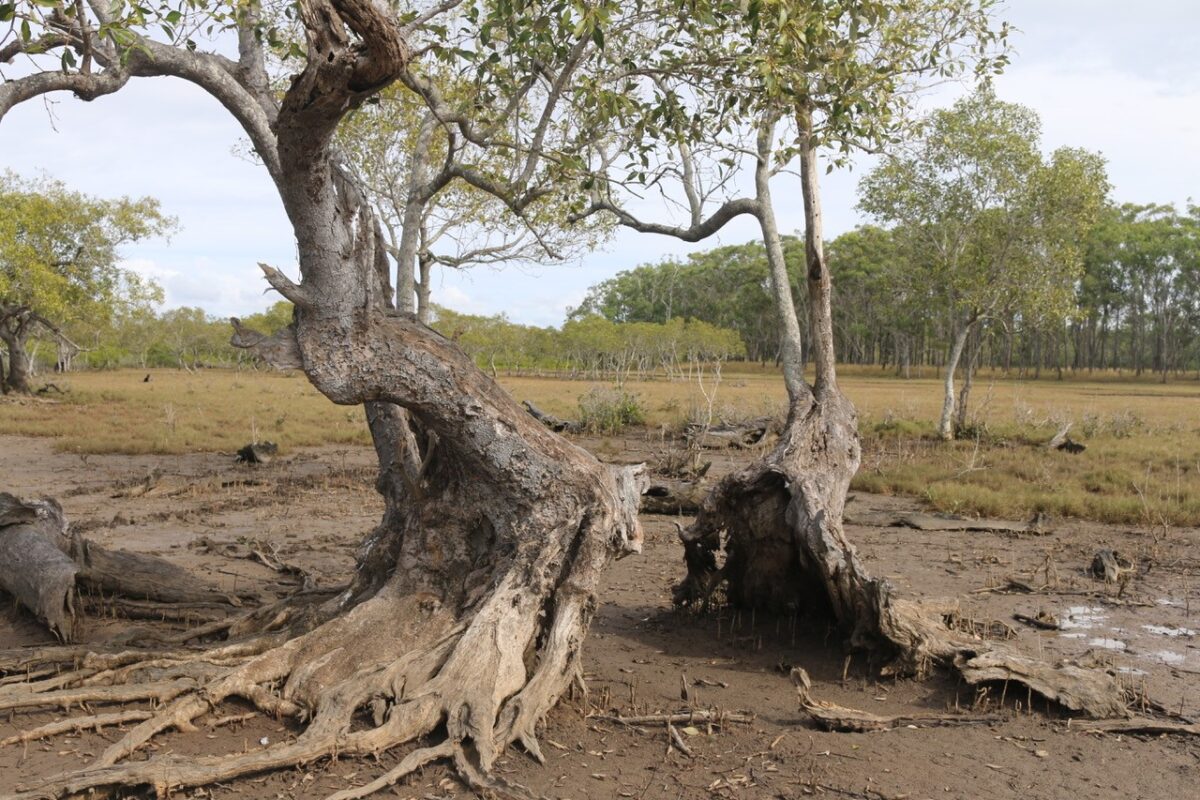
Waler Data Base @FaceBook. Image: Magna Carta Tree. K’gari. This photo from Fiona Foley’s 2020 photographic series: ‘The Magna Carta’ features a mangrove tree named by cattle farmer, Lindsay Titmarsh, on whose property—Tandora—the tree has been living for over 700 years (about the same age as The Magna Carta).
There was originally a significant Aboriginal population on K’Gari, the Butchulla people, thought to be over 1,000 people. A mission was established there in approximately 1899, Bogimbah Creek Mission, taken over by the Anglican Board of Missions in 1900 and run as a cattle station (Tandora). They kept some good work horses. About 140 adults and 40 children lived there, the population had been drastically reduced over the years, as a result of colonisation.
A big freshwater lake on the island, and several smaller ones, meant water wasn’t an issue.
In 1904 the mission was closed and the people removed from the island as they were poorly treated (and others coveted the buildings and country…)
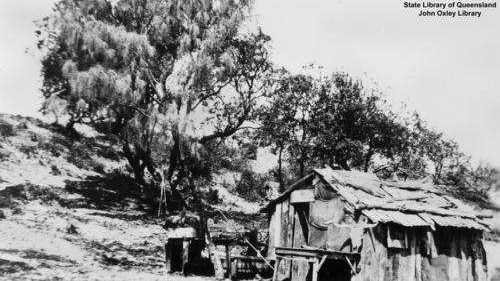
Aborigines, some with opium addictions and alcohol dependencies or living where white farmers wanted to run sheep and cattle, were rounded up and sent to live at Bogimbah Mission. Many died of malnutrition and disease in the harsh conditions at the mission that was basically a jail without bars.
Image: Shelter at Bogimbah Mission
From the early 1860’s there was a big timber industry on K’Gari, requiring many work horses. Cattle were also run there, 140 taken there in 1901 due to mainland drought (and many sheep too). The horses were from cattle and timber industry days. Strong, hardy, quiet. They have been in the area for so long now they have developed immunity to mosquitos, a rare trait indeed.
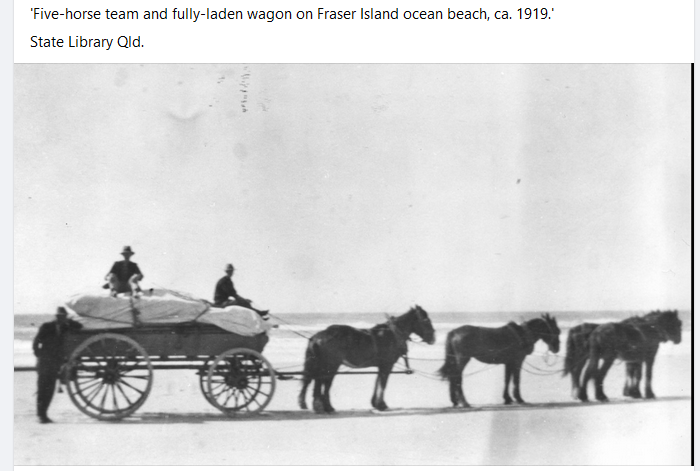
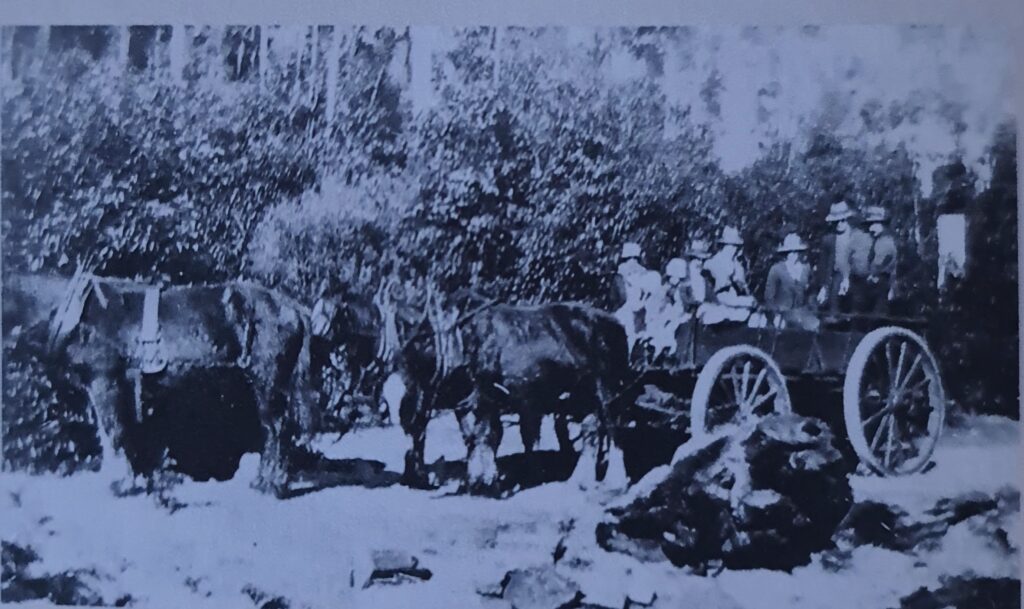
The whole island was made a National Park in 1992. The northern end had been made a National Park in 1971 although sand mining continued until mid 1970’s.
Brumby is an aged mare from K’gari, exceedingly rare. The island was shot out in 2003. In 1997, a few years before the main massacre a little foal about 3 days old, bewildered and hungry, was found alone on Ellis Road. Her dam was perhaps shot and it’s possible the foal was aborted/premature as often happens when mares are shot.
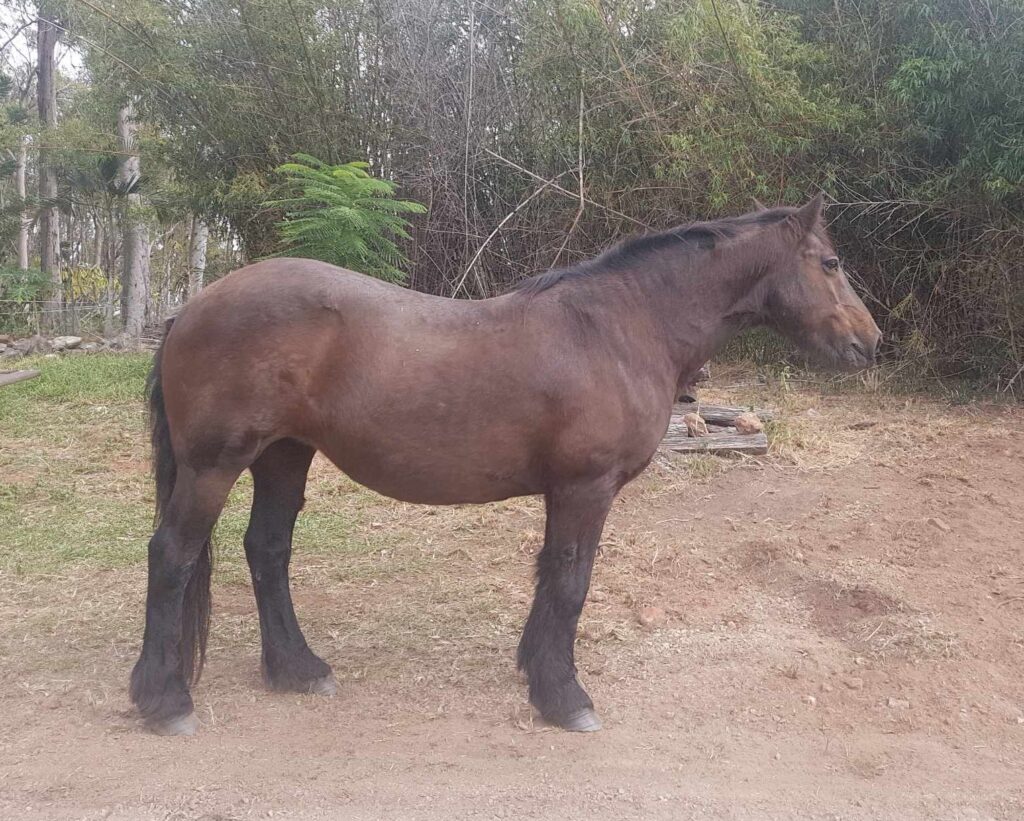
Many thanks to Sonia Hutchinson for her account of Brumby’s rescue: “In late November, 1997, it was on the local radio, that a foal on, what was then known as Fraser Island, had been attacked by a pack of dingoes. The locals in Orchid Beach were hoping someone would take her off the Island and give her a home. While they were trying to chase the dingoes away, her mother ran off and abandoned the baby, who was only a couple of days old. They locked her in a shed, and had a fisherman bring some di-vetalac from the Mainland to feed her. They named her Ellie. I started phoning Parks trying to get a permit to remove her to the Mainland, but they said they had a policy, that no animals could leave the Island. It was the same for the dingoes. They said they were going to shoot her. I asked my friend Bev, if she would help with some of the phone calls. It took a couple of days of phoning Parks, Politicians, and anyone else we could get to listen, and finally Parks were told to give us a permit. Ellie was put onto the back of a fisherman’s ute, for the long trip down the beach to the barge landing. Once on the barge, she spent the rest of the trip standing quietly at the front of the barge. Bev and I drove to River Heads to collect her, and she travelled in the back of the car, calmly looking out of the back window. We asked Gayle a neighbour at Walker’s Point if she would like her, and she decided to give her a home, and called her Brumby. She developed an umbilical hernia, which was successfully operated on. When she was about 3 years old, Gayle’s kids threw a saddle on her and rode her around a yard a few times. They also put her in a sulky and led her around. Nothing fazed her….but that was basically the extent of her saddle and harness career. She lived there in a paddock for 20 years. Then Gayle moved, and couldn’t or wouldn’t take her, and offered her to Bev. Who didn’t really want her either, but took her to give her a home. It was 2018 about 3 weeks after, my friend Fred Williams who wrote about her in his book, Equine Epitaph, was holding a book launch at the Hervey Bay Historical Museum. I asked Bev, if I could take her to the book launch. Bev didn’t want her to go, but eventually decided to let me pick her up. A few weeks after, Fred had another book launch in Maryborough, and Ellie was able to make another appearance. She didn’t put a foot wrong, even when Marianne the steam train was expelling big bursts of steam. Ellie/Brumby is 26 years old now and Bev has had her for 6 years.”
See her horse record for more photographs supplied by Sonia of the rescue.
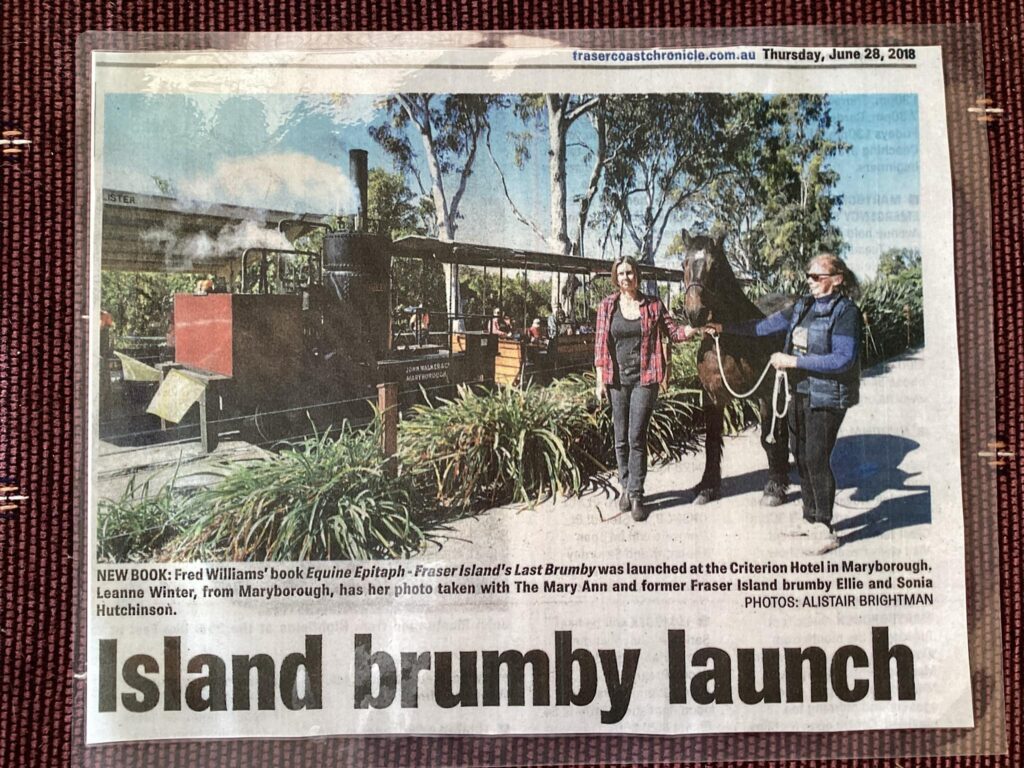
There were also has brumbies rescued from Fraser Island, photo and account also supplied by Sonia: “Shirley Crawford from Towoomba took 20+ when Parks was removing them. She found homes for quite a few, broke the others in and used them in a riding school, including a palomino stallion, who was also used to teach kids to ride.”
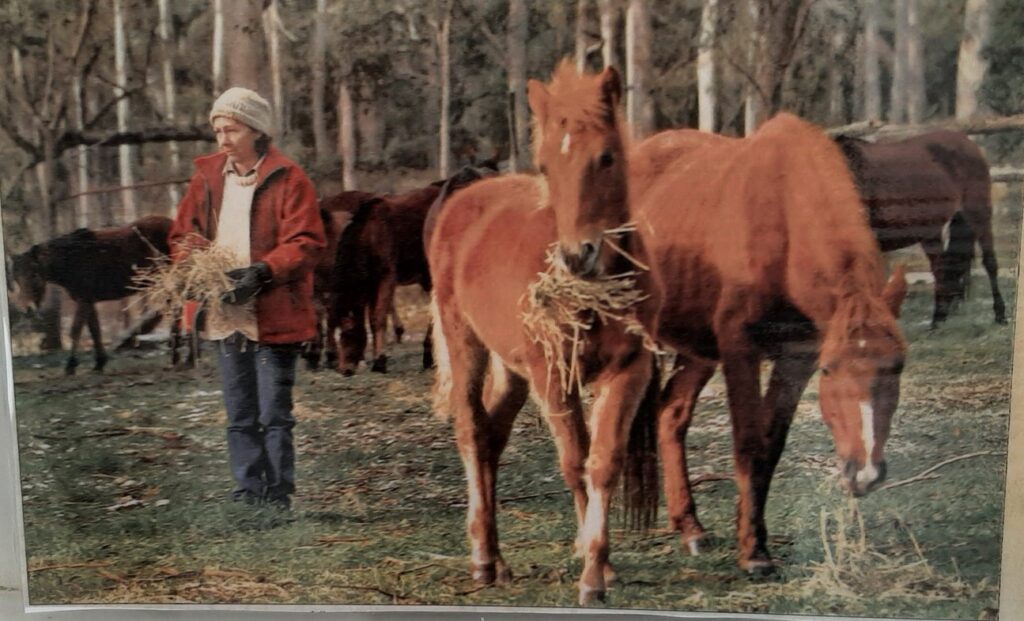
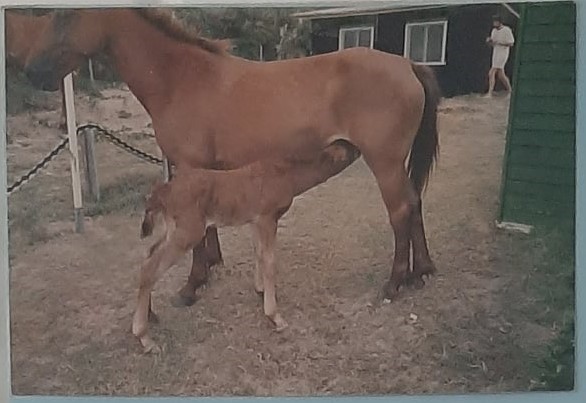
Brumby’s story (Ellie as she was called when rescued) can be found in the book Equine Epitaph Under the Rainbow: Fraser Island’s Last Brumby, by Fred Williams. Images below supplied by Sonia.
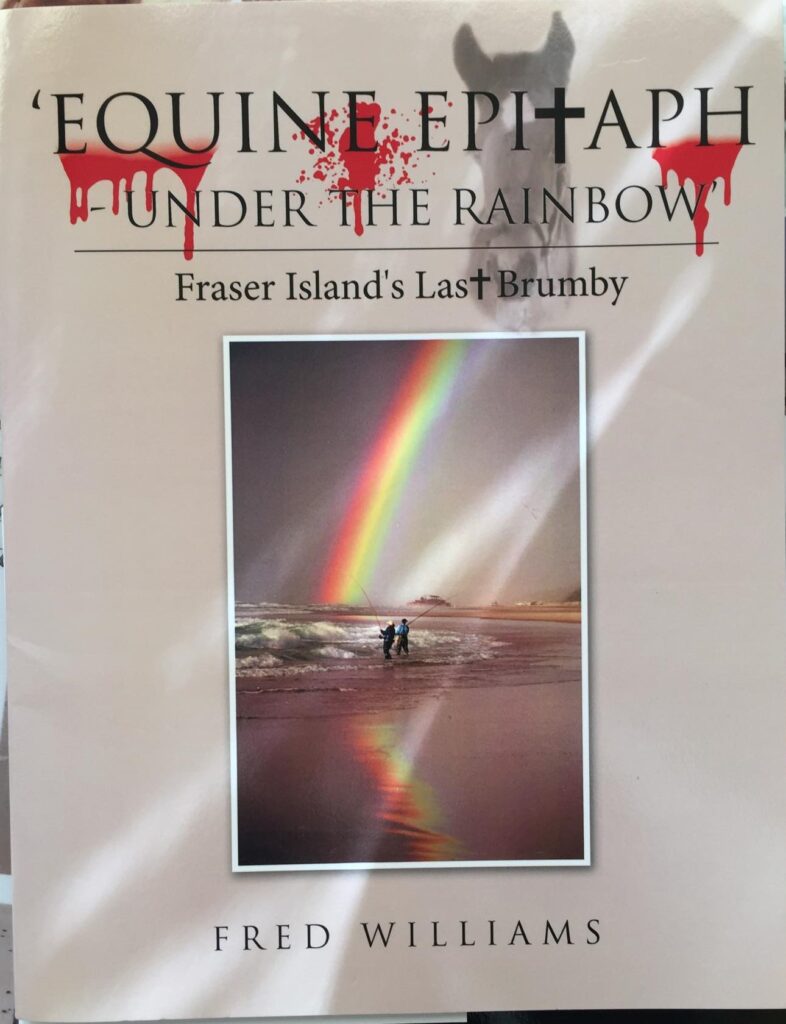
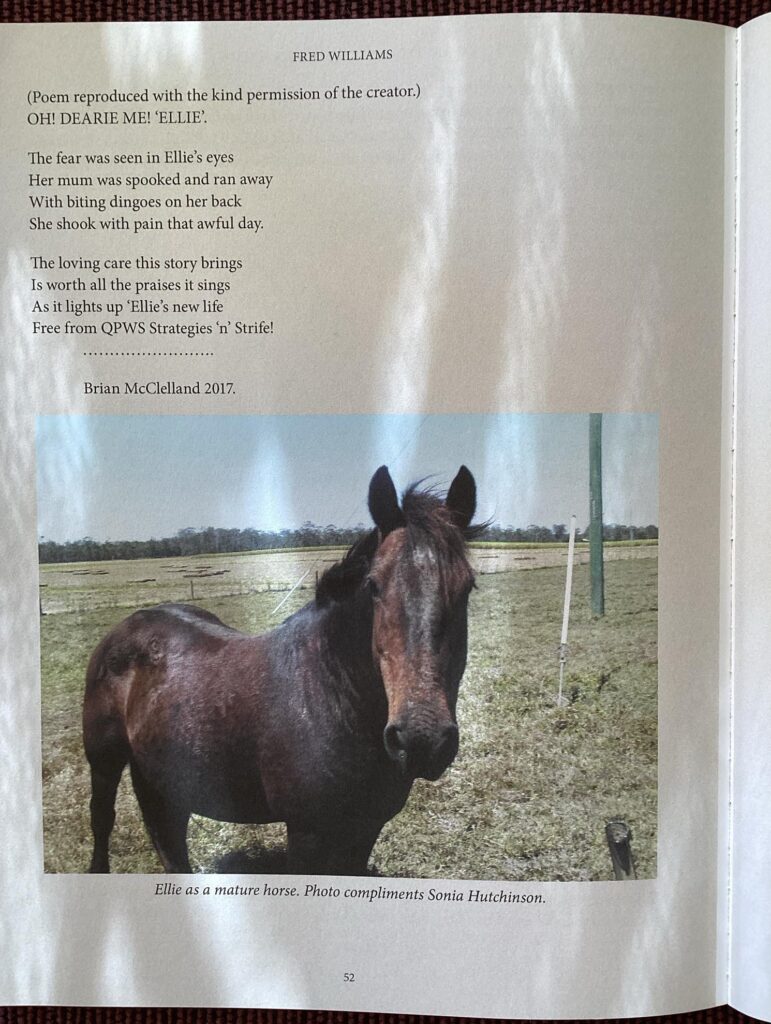
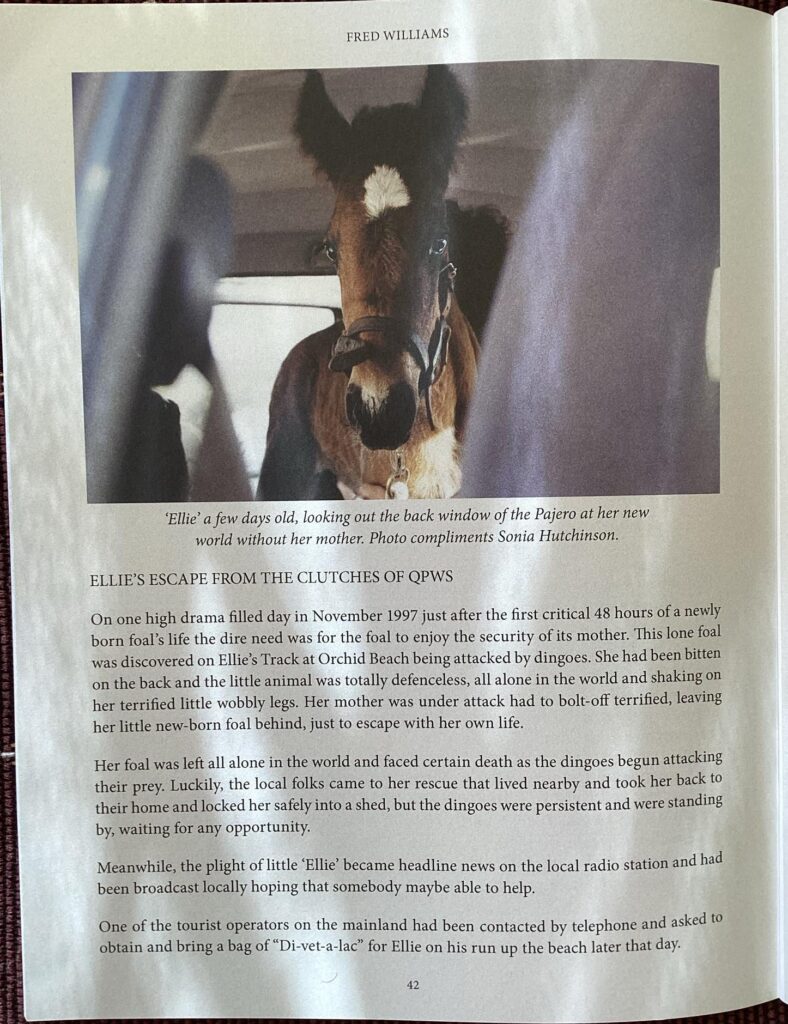
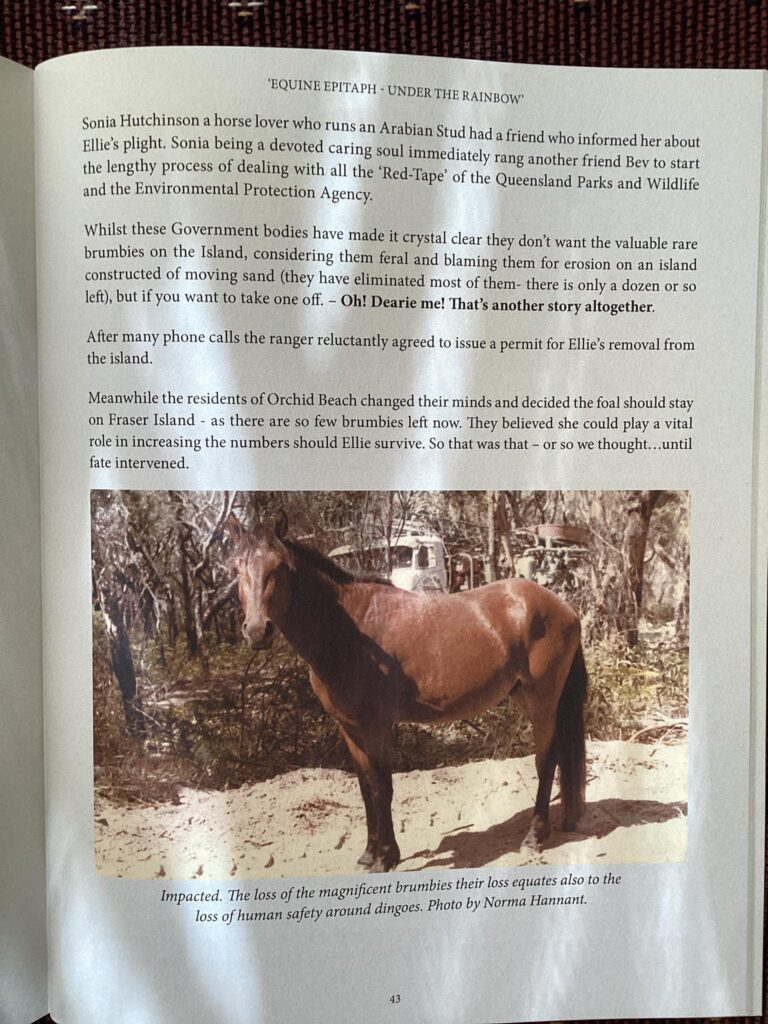
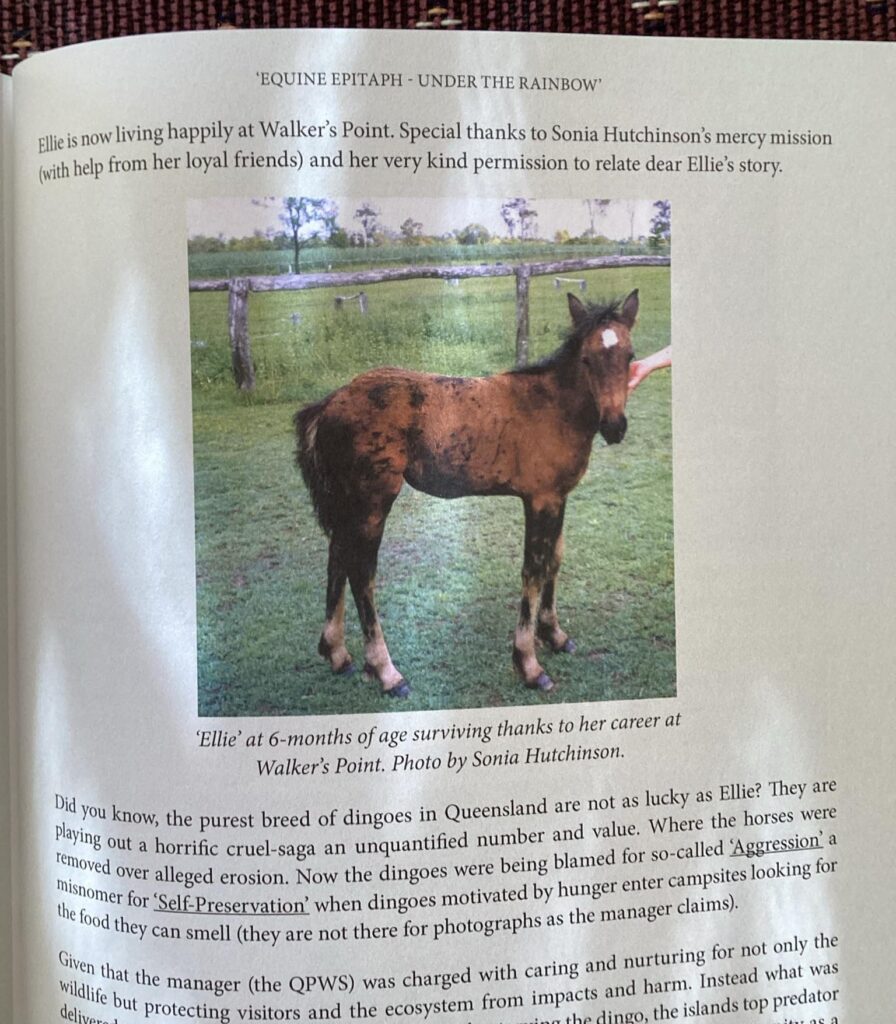
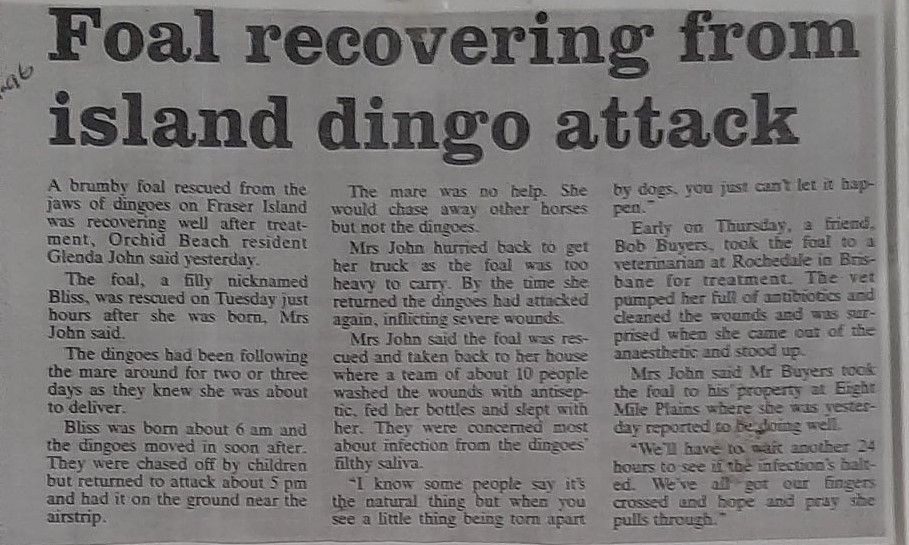
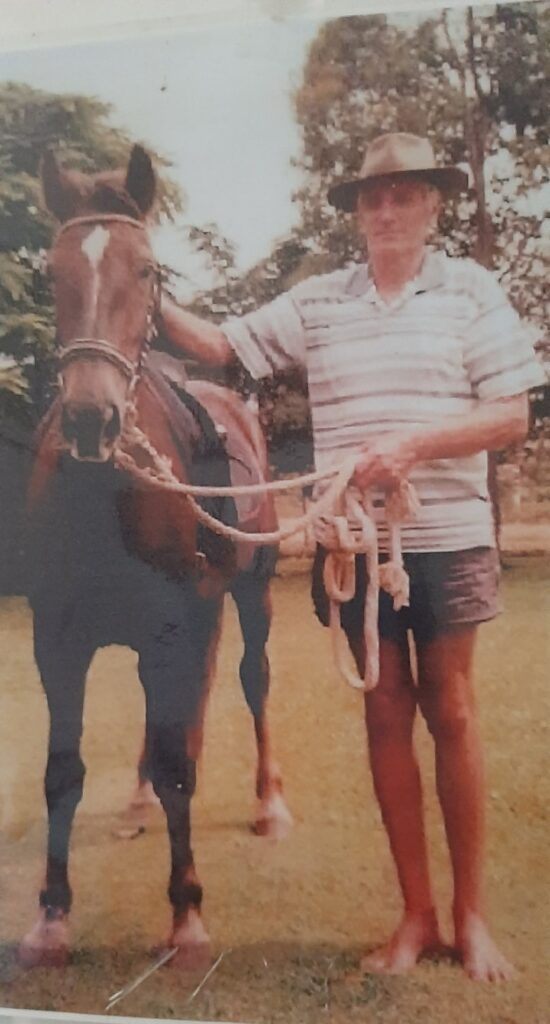
Another foal was saved in 1996, after a dingo attack, ‘Bliss’ a filly re-named Babe by her owner Bob Buyers. She was ridden and jumped, sadly now deceased, along with Bob (and Jill who looked after her most of her life). Photos supplied by Sonia Hutchinson.
In recent years half a dozen horses were found to have escaped the massacre on the island by remaining hidden in lush bushland, but it’s unknown if they’ve avoided the shooters since discovery, or if they’ve bred, or if they’ve have been removed and offered to homes.
It was a terrible loss of a magnificent type. There was no attempt to remove them and find them homes, nor properly look at a sustainable population. A great loss of old Australian genetics of a horse adapted to heat, sand, mossies and all the environmental factors of the area; these traits take generations to develop and are useful for those living in the same climate – so much easier to keep and use a horse already adapted.
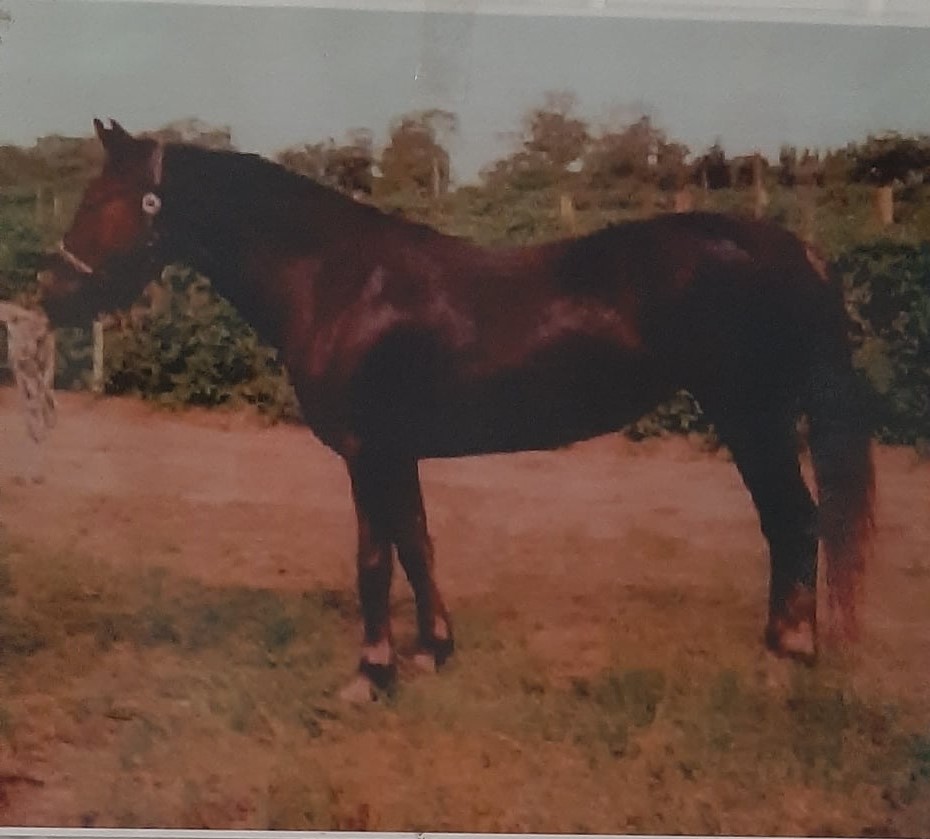
Wonderful to see these beautiful Australian mares, good artillery Waler types – our most rare type of all along with Ponies, (I’d say heavy but would understand if others thought medium it’s always hard to tell from a photo) and in a fabulous home, well done all, and thank you so much to Simi for sending in Brumby’s photos and details recently, and to Angel for supplying images from Sonia Hutchinson in 2024 so we could update this post.
This buckskin gelding is thought to also be a rescued foal from the time of the K’Gari horse removal (source Audrey, via FaceBook comments on our Waler Data Base post about the mare Brumby, July 2023).
If anyone else knows of any horses from K’gari, Fraser Island, we’d love to hear about them please – and photos very welcome for the website.
The same for any of the amazing ponies from Stradbroke Island (and Curtis Island also). About 25 years ago a person in Brisbane had two Stradbroke Island Ponies saved at the time of the massacre there, but no idea if they’re still alive, or bred, or if any others exist. They looked like Timor Ponies and had been on there sustainably for about a century. All shot now.
